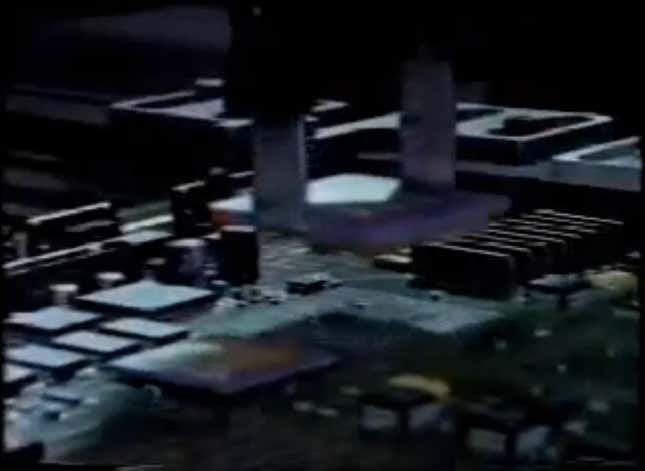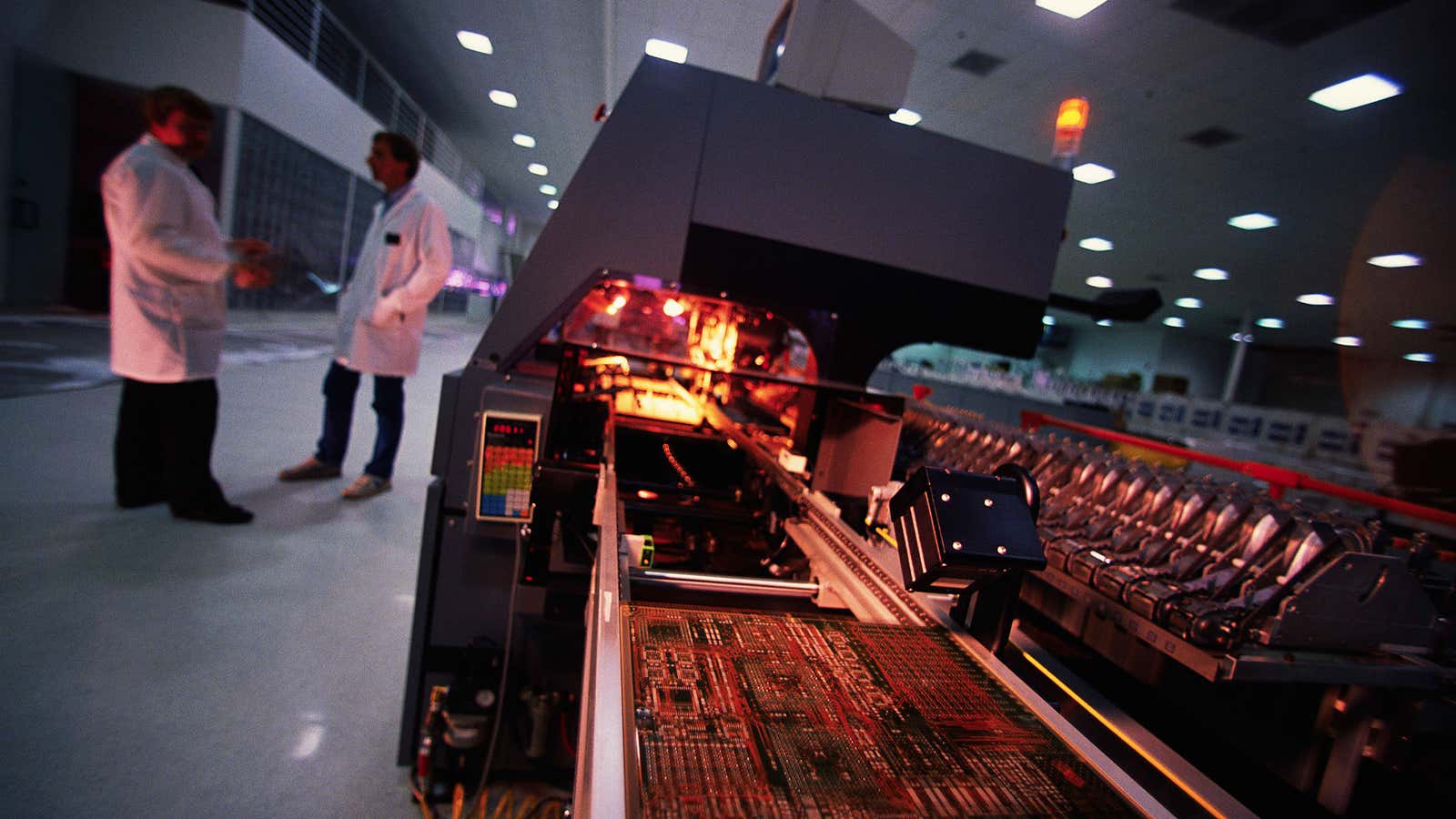Apple CEO Tim Cook revealed to BusinessWeek that his company will invest $100 million in manufacturing in the US. It’s possible that this entire investment could be funneled through sub-contractors, but there is also speculation that Apple could be doing some of that manufacturing itself, in a facility in Elk Grove, California that last produced Macintosh computers in 2004. Evidence that Apple might commence manufacturing at Elk Grove include a 50% increase in the head count there from 2011 to 2012, the site’s massive connection to the local power grid, and the fact that Apple may already be refurbishing desktop Macs there.
If Apple does start manufacturing products in Elk Grove again, or any other facility in the US, what’s that going to look like? One possible answer comes from Steve Jobs’ history at a company called NeXT Computer, which he co-founded in 1985 after being exiled from Apple.

NeXT was unusual in that it had manufacturing in the same building as all the engineers who designed its computers. In the mid-80s, competitors like HP and IBM had already outsourced much of their manufacturing to the “Far East,” which at that time meant Taiwan, South Korea and Japan, but not yet mainland China. In order to justify putting a manufacturing plant on some of the most expensive real estate in Silicon Valley, NeXT created a highly automated manufacturing process that involved almost no human handling of the circuit boards produced there. Because it was designed from the ground up for automation, the company’s assembly line was continuous, eliminating intermediary transfers of its circuit boards that could introduce defects.
NeXT and Jobs were so proud of this “fingers-free” assembly line that they created a remarkable promotional video, “The Machine to Build the Machines,” to show it off. Set to a soaring soundtrack, it’s a piece of corporate propaganda so good that you might even believe the narrator’s final, over-the-top assertion: “The board emerges ready to power the most advanced, most sophisticated, most efficiently produced computer workstation of all time. NeXT.”
Randy Heffner, who was VP of manufacturing at NeXT at the time, told a reporter for the membership magazine of Association for Manufacturing Excellence that keeping manufacturing in the same facility as design meant that NeXT could out-innovate its competitors by continuously improving its products. And the only way to justify that proximity was to use a very high level of automation, and a very carefully designed assembly line, to keep costs lower than manufacturing in Asia plus shipping costs and an import duty.
To Heffner’s commitment to flexibility and cost control, Jobs added his trademark obsessiveness, which went all the way down to the color of the robots themselves. From the same 1991 article:
The color coordination—gray, white and black—and Bauhaus simplicity of the plant reflects the founder’s vision of thorough integration of all elements of the physical design—furnishings, color, lighting. The 40,000 square foot facility is laboratory-clean.
During the start-up, one supplier’s machine arrived at the facility in glossy stippled texture, rather than flat gray, as specified. “Take it back and repaint it,” was the order. This was the supplier’s first encounter with concern for color integrity. His initial response, “You can’t tell me that the company president cares what shades of gray his machines are!” soon faded. The machine was returned to the factory, sanded down, and repainted.
(For an image of that “Bauhaus simplicity,” check out this scan from a vintage magazine article on NeXT.)
Of course, Tim Cook is no Steve Jobs, and the “pick and place” and soldering robots featured in NeXT’s promotional video are now so commonplace that nearly identical machines show up in contemporary, and much lower-budget, promotional videos for circuit board factories in mainland China.
Ultimately, NeXT’s manufacturing experiment was a failure, but only because not enough people wanted to buy NeXT computers that couldn’t run either Windows or Macintosh software. By the time the company was acquired by Apple, in 1997, all that remained of Jobs’ attempt to build the next big thing was the computer’s operating system, which eventually became Mac OS X.
But that doesn’t mean that what Jobs learned at NeXT wasn’t valuable to Apple, which he returned to upon the acquisition of NeXT. At NeXT, Jobs oversaw a manufacturing facility that borrowed from competitors in Japan concepts like just-in-time manufacturing, in which orders for parts are placed on an as-needed basis. As a result, NeXT, and later Apple, were able to build factories that didn’t need to be attached to warehouses full of parts that were a drag on the bottom line.
Any Apple manufacturing facility in the US is likely to involve a great deal of the sort of automation that was in evidence at NeXT. The US simply isn’t a place where Apple can create the sort of vast campuses of assembly-line workers run by Foxconn, which does most of the assembly of the iPhone. Those campuses allow both the scale and flexibility that Apple’s exacting design team and enormous sales volume demand. For example, executives at Apple told the New York Times that a last-minute design decision required that a factory in China rouse 8,000 workers at midnight to commence a 12-hour shift.
What the US does offer is proximity to Apple’s headquarters and R&D operations in Cupertino, California. Apple has engineers and support staff in an expanding campus in Austin, Texas, a facility that appears to be important for design of the microchip “brain” of the iPhone. (That chip is also manufactured in Austin, in a facility owned by Samsung.) It makes sense that more high-value or specialized manufacturing might come to the US. For example, Apple is long overdue to update its Mac Pro line of high-end workstations. They might be prime candidates for US manufacturing, because they’re large, which means higher shipping costs, and they’re highly customizable, which means they require a more varied manufacturing process.
